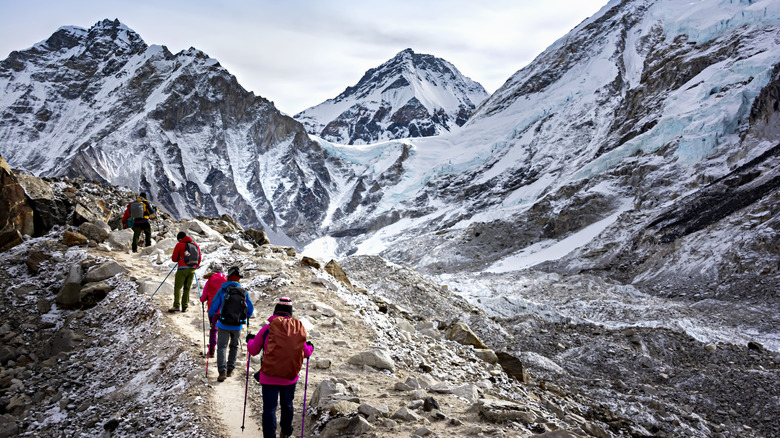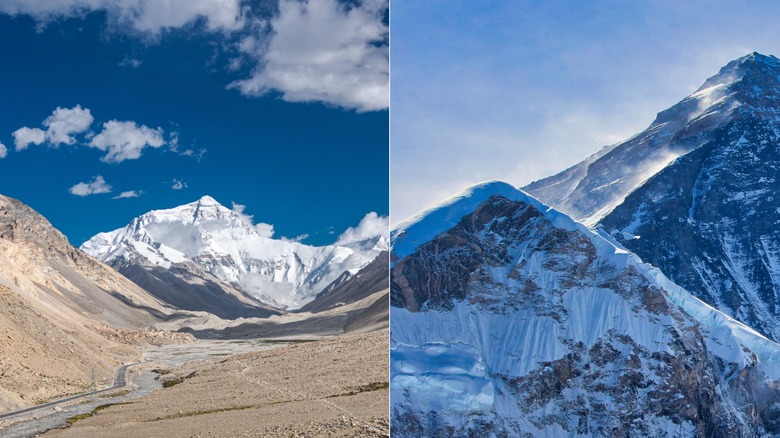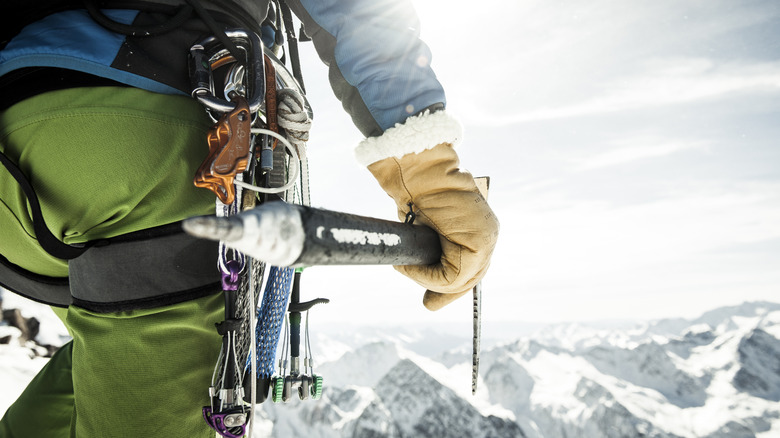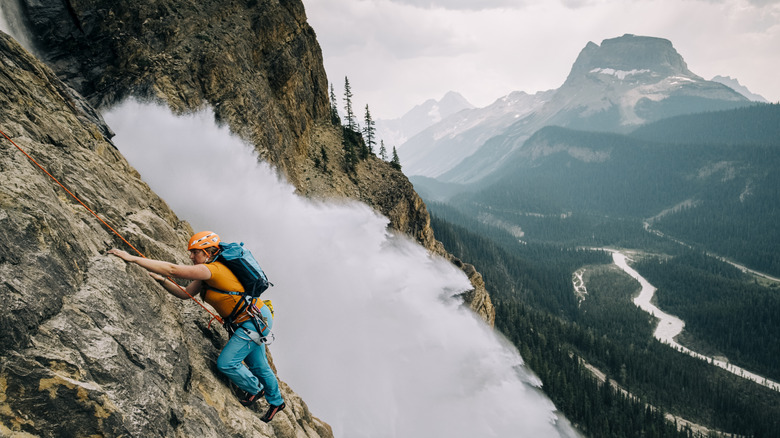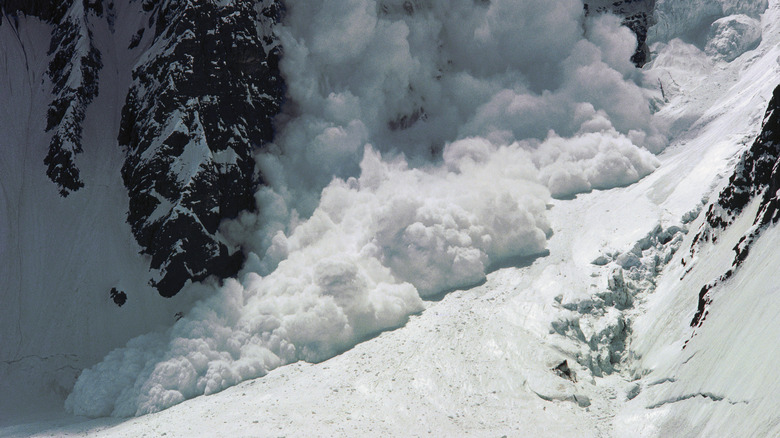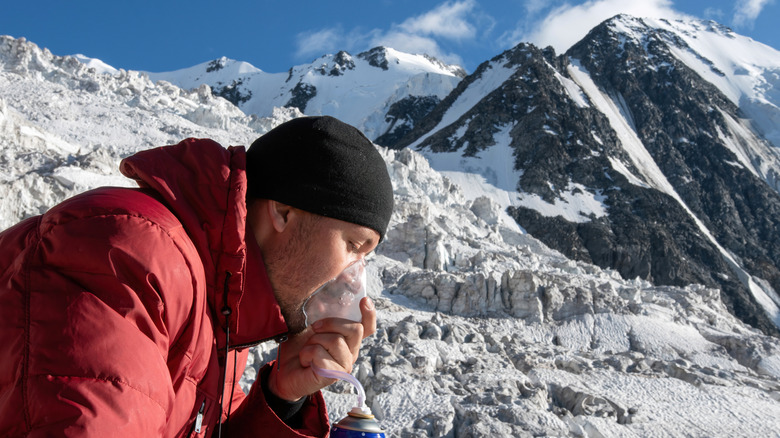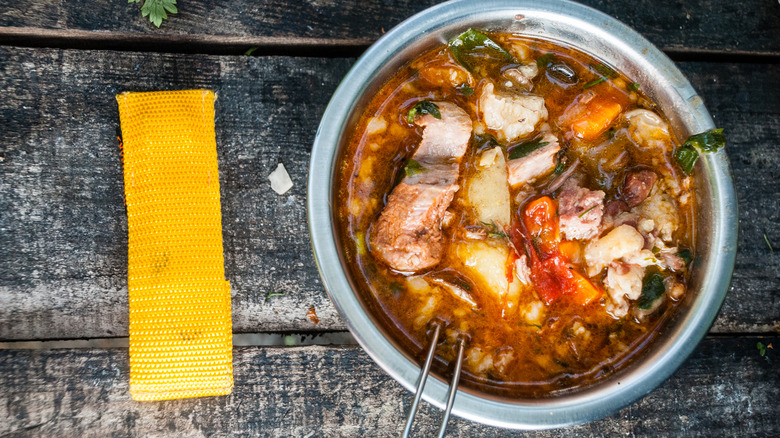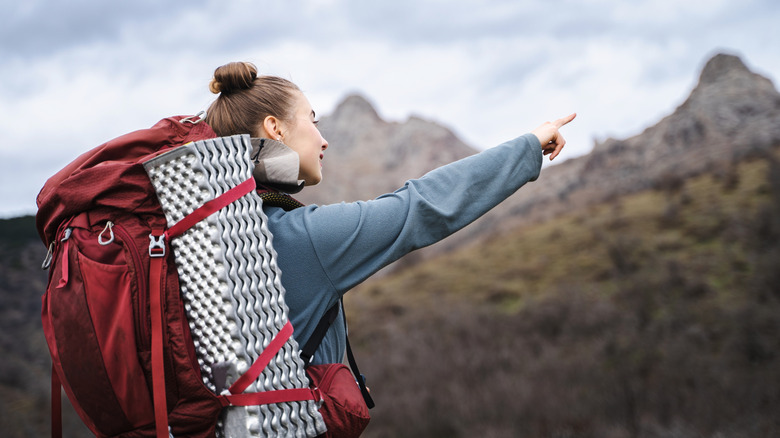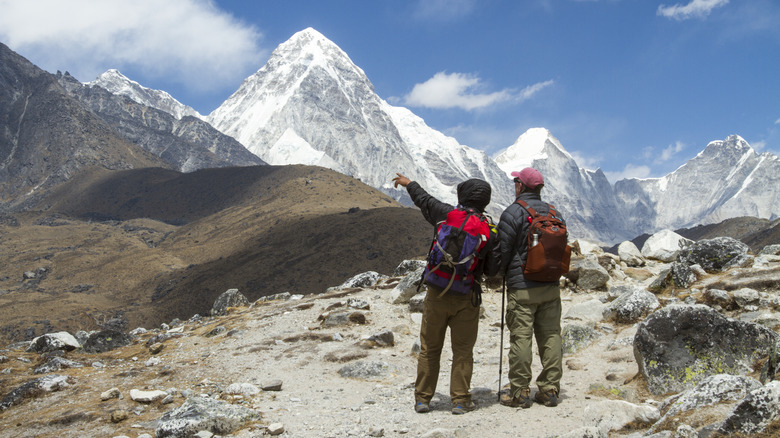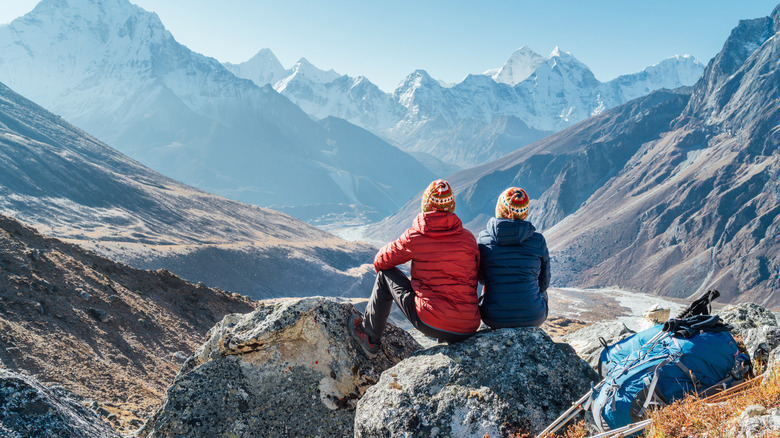Our Top Tips To Help Prepare You For Hiking Mt. Everest
We may receive a commission on purchases made from links.
Mount Everest has captivated adventurers for decades, offering an unparalleled challenge that pushes human limits. As the tallest peak on Earth, it's not just a mountain — it's a symbol of endurance, ambition and achievement. Since Sir Edmund Hillary and Tenzing Norgay's historic ascent in 1953, over 7,000 climbers from around the globe have reached its summit, drawn by its breathtaking views and the prestige of standing at the top of the world.
Make no mistake — conquering Everest is no easy feat. Well-known to most, it is one of the world's most treacherous mountains to climb, having claimed the lives of over 300 people to date. It demands meticulous preparation, both physically and mentally. Along the way, climbers face unpredictable weather, thin air, and sheer exhaustion. That's why preparation isn't just important; it's essential.
In this guide, we'll share the top tips to help you prepare for this extraordinary journey, including choosing the right gear, mastering essential mountaineering skills, and acclimatizing to the high altitude. With these insights, you'll not only be ready to meet the mountain's challenges but also fully appreciate the beauty and significance of every step toward Everest's summit.
Understand Everest's climbing seasons, routes, and timelines
Few folks know how long it takes to climb Mount Everest on average. A full journey to the summit typically spans around 6-9 weeks. Any hiker or climber who has been on a multi-day adventure knows that such a long journey requires careful planning, preparation, and a deep understanding of the route.
Climbers can choose between two routes: the South Col via Nepal or the Northeast Ridge via Tibet. The South Col route, which starts in Nepal, is the more popular option. It offers incredible views of the Khumbu Icefall and the rest of the Himalayan range. Since it's more frequented, it also offers more well-established logistics like porter services and fixed ropes along certain sections. On the downside, since it attracts more climbers, there is more crowding at camps and bottlenecks along the way. In contrast, the Northeast Ridge route is quieter, with fewer climbers, because it usually presents harsher weather conditions, and base camps lay at higher altitudes. Climbers on this route also face steeper ascents, and more technically demanding sections like the notorious Second Step.
The timing of your climb is equally critical. There are two good times in the year to book your Mount Everest expedition. The pre-monsoon season, from March to May, is widely considered the best time to attempt Everest. During this period, stable weather conditions prevail. In addition, snow that's accumulated from the winter season fills crevasses, creating a safer climbing environment. Alternatively, the post-monsoon season, from September to October, offers another window of opportunity with clear skies and reduced crowds, though the temperatures are colder, and conditions can be less predictable.
Invest in quality clothing and gear
One might assume that after deciding when to hike, the next step is to start training. But there's one more vital component: securing the necessary gear. Why? Because training with your gear is an essential part of preparation. High-altitude climbers know that climbing with gear is drastically different from carrying a day bag. Having your gear early on allows you to incorporate it into your training routine. Ideally, if you're thinking about summiting Mount Everest, you'll have mountaineering experience, so you may not need to buy all your gear brand new. Your expedition company will be able to provide a comprehensive gear checklist for you to use.
A preliminary list should start with moisture-wicking base layers to keep sweat off your skin. Merino wool base layers, like the Icebreaker Merino Men's 200 Oasis Long Sleeve, come well-recommended. Then, add insulating layers for warmth, and finish with a windproof, waterproof outer shell to protect against the elements. Mountaineering boots, socks, and gaiters designed for extreme cold are also critical for keeping your feet warm and functional. Paired with crampons, they provide the grip and stability needed for navigating ice, snow, and steep terrain. Other must-have items include insulating gloves, climbing equipment, and ice axes for technical sections of the climb. Additionally, head, face, and eye protection are vital against the cold, as well as against snow blindness, which is a painful condition caused by the sun's intense UV rays reflecting off the snow.
When it comes to gear, prioritize quality. Research reviews and consult recommendations from your expedition company — they're the experts and often have valuable insights. While premium gear may be expensive, their reliability and performance in life-threatening conditions make them a worthwhile investment.
Physically train your body for Everest's demands
Ideally, Everest will not be your first high-altitude ascent. Even if it isn't, visit a doctor before and during your training to assess your physical health. Your training should start at least a year in advance. This timeline will allow you to boost your general fitness as well as mountain-specific endurance.
When it comes to general fitness, developing excellent cardio is essential to sustain energy during long ascents and to combat the reduced oxygen levels at high altitudes. Incorporate activities like running, cycling, swimming, or high-intensity interval training (HIIT) into your routine at least 4-5 times a week, gradually increasing intensity and duration. Equally important is building strength, particularly in your legs and core, so that you can navigate challenging terrains while carrying gear. In fact, it's best to simulate the load you'll be carrying on Everest with a weighted backpack, gradually increasing the weight you carry to up to 50-60 pounds to familiarize your body with the strain of hauling equipment. If you're drawing a blank about how to actually schedule your training, books like "The Outdoor Athlete" and "Training for the New Alpinism: A Manual for the Climber as Athlete" provide great insights.
As many climbers know, nothing compares to the real thing. This is why mountain-specific training, or training on actual mountains is so important. Many successful climbers spend years tackling other high-altitude peaks to experience the effects of altitude and test their physical and mental resilience in real-world conditions. Kilimanjaro, Cho Oyu, or Aconcagua are great practice climbs, but there are also plenty of US National Parks that will help prepare you for hiking Mount Everest.
Master the basics of high-altitude mountaineering
One reason practice climbs are so important is that they give you an opportunity to test out and practice very specific mountaineering skills. Being familiar with your equipment will help you stay safe on your journey to the summit. Some skills and tools you should master using are:
- Crampons: Crampons are designed to provide traction on icy or snowy surfaces. Learning to properly attach and use crampons with your boots is essential for maintaining stability on steep, slippery slopes. Practice walking in crampons before your expedition to ensure you're comfortable moving in them, because they require a specific gait to prevent tripping or catching on your clothing.
- Ice axes: Ice axes are another key tool designed to help with balance and stability, especially on icy terrain. They are used for self-arresting (stopping yourself if you start to slide) and for climbing steep sections of snow and ice. Mastering the technique of holding and swinging the ice axe properly is crucial as improper use can result in loss of control or injury. Practicing on smaller peaks or glaciers to refine your technique is important before attempting Everest.
- Rope skills: Rope skills are vital for crossing crevasses or securing yourself during steep ascents. Learning how to tie essential knots, like the figure-eight or prusik knots, and knowing how to belay and rappel is crucial for climbing safely. Ropework also comes into play when you're roped together with a partner, especially when navigating sections that require teamwork.
There are plenty more techniques that are crucial for a successful climb on Mount Everest. Some climbers opt to train with a coach or a training program to ensure they are fully prepared for the demands of the ascent.
Prepare for bad scenarios
Everest presents a host of dangers, including avalanches, crevasses, and weather extremes. Educating yourself about the risks beforehand will help set you up for success.
Avalanches are a significant threat on Everest, particularly in areas like the Khumbu Icefall, where unstable ice blocks and shifting glaciers can collapse without warning. Reducing risk involves staying updated on weather forecasts, and moving quickly through hazardous zones. Learning to recognize avalanche signs and knowing how to react — such as creating an air pocket if buried — can save lives. Participating in avalanche safety courses, including beacon training, can increase your chances of survival and prepare you to locate and rescue others too.
Crevasses, deep cracks hidden beneath snow, pose another peril. Proper training in glacier travel and the use of safety equipment is critical. Many climbers also carry crevasse rescue gear and practice extraction techniques beforehand to prepare for potential emergencies. Rescue simulations that teach you how to set up a pulley system for self-rescue or assist a team member can make a critical difference.
Of course, weather extremes like sudden blizzards or high winds are also likely threats. These can disorient climbers and increase the risk of sickness. Knowing how to establish shelter, using a bivy sack or building a snow wall, as well as managing core body temperature can help endure unexpected storms.
Take acclimatization seriously
One of the reasons practicing on other high-altitude mountains is key is because a big part of successfully summiting Mount Everest is about how well your body adapts to the altitude. At elevations above 26,247 feet (8,000 meters), known as the death zone, the oxygen level is about a third of what it is at sea level. Without proper acclimatization, climbers risk headaches, nausea, dizziness, and shortness of breath — telltale signs of altitude sickness, a potentially life-threatening condition.
You can increase your chances of a successful summit by prioritizing acclimatization strategies during training. Spending time at higher altitudes before you climb Everest allows your body to adjust gradually to thinner air. Incorporate ascents of progressively higher mountains into your training regimen. Additionally, you can simulate altitude exposure through methods like using a high-altitude training mask or spending time in an altitude chamber, though these should complement, not replace, real-world exposure. At high altitudes, breathing becomes a conscious effort, so breathing techniques, like diaphragmatic or "pressure" breathing, can improve oxygen intake and efficiency. Practice these methods regularly to build muscle memory, ensuring you can rely on them instinctively when in the "death zone."
Cold exposure training is another critical component. Everest temperatures can plummet to -76°F (-60°C), making frostbite and hypothermia ever-present threats. Gradually introduce yourself to cold environments during training to help your body adapt. Cold showers, winter hikes, and spending time in freezing conditions (safely, with proper layers) can build your tolerance.
Hydration and nutrition start before the ascent
Along with exercise, a crucial component of building your fitness levels is adequate hydration and nourishment. Your body will be operating under extreme physical stress, burning thousands of calories daily and losing fluids rapidly in the cold, dry mountain air. Preparing your body to manage these demands before, during, and after the climb is essential for maintaining energy and avoiding serious complications like dehydration or malnutrition.
Before your climb, acclimate your body to eating high-calorie snacks and foods, energy gels, and powdered meals that are easy to prepare and digest at altitude. This adjustment can be challenging since appetite often decreases at high altitudes. Training your body to accept and efficiently use these foods during practice hikes or other expeditions will make it easier to stay fueled on Everest.
Hydration is equally important. At high altitudes, you lose more water per day through respiration and sweat. Dehydration can exacerbate altitude sickness and severely impact performance. Get used to drinking at least 3-4 liters of water daily, supplementing with electrolyte tablets or powders to replace lost salts and minerals during your training period.
Prepare mentally for the climb
Climbing Mount Everest isn't just a physical challenge — it's a mental and emotional battle that can test even the most determined individuals. The journey to the summit demands resilience, focus, and the ability to endure prolonged isolation, fear, and exhaustion. Sleep deprivation, limited oxygen, and extreme cold take their toll, making it vital to develop coping strategies in advance. Meditation, mindfulness practices, and controlled breathing exercises can help you stay calm and focused under pressure.
One of the harshest realities of Everest is its remoteness. You'll spend weeks away from loved ones, with limited communication in extreme conditions. Of course, you'll have fellow mountaineers travelling with you to rely on, but they will also be going through the same things as you. Learning to let out your emotions healthily through journaling and visualization exercises is effective, but also takes time to hone, so starting these while you're training will help you stay grounded and focused during your ascent
Fear is another factor climbers must face. The mountain's dangers are ever-present — treacherous terrain, sudden storms, and even the sight of climbers who didn't make it serve as sobering reminders of Everest's risks. It's essential to approach these realities with respect and preparedness. Setting mantras during your training that you can come back to can help anchor you in difficult moments on your journey.
Choose a local and reputable expedition company
Choosing the right expedition company is one of the most critical decisions you'll make when preparing to climb Mount Everest. Working with a reputable company not only enhances your chances of reaching the summit but also ensures your safety, comfort, and overall experience. Climbing Everest is a monumental endeavor and the support you receive can make all the difference.
Sherpas and experienced guides are the backbone of any successful Everest expedition. These skilled professionals are intimately familiar with the mountain's challenges, weather patterns, and routes. Sherpas also often handle heavy loads, set up camps, and pave the way through treacherous terrain. Their expertise is invaluable in navigating the unpredictable environment, and their knowledge of the mountain's culture and history adds depth to the journey.
Expedition companies also take care of logistics, including obtaining mandatory permits, arranging transportation, and managing food and supplies. They also provide essential equipment like oxygen tanks and radios and maintain strict safety protocols to address emergencies. Their organized approach allows you to focus on the climb, knowing the operational details are in capable hands. When choosing a company, look for those with proven track records, strong reviews, and transparent policies. Many top-tier companies emphasize ethical climbing practices, such as employing local staff under fair conditions. Supporting local companies or those that work closely with Nepalese communities also ensures that your climb contributes to the region's economy and culture.
Financial planning and budgeting is important
Climbing Mount Everest is a significant financial undertaking. The total cost for a successful, guided expedition can range from $65,000 to over $100,000 USD, depending on the level of support, the route, and the company you choose. Proper financial planning is essential to ensure that you're prepared for the expenses involved. A major portion of your budget will go toward permits, which can cost as much as $15,000 USD for the South Col route via Nepal. Additional costs include hiring experienced guides and Sherpas, purchasing specialized gear, covering accommodations, meals, and transportation. High-quality equipment like insulated clothing, mountaineering boots, and oxygen systems can be expensive but also critical for safety and comfort in extreme conditions.
Don't forget to budget for tipping your Sherpas and guides, as tipping is a customary and vital part of supporting these skilled professionals. Tips usually start at $10 USD/day per group, depending on the size of your team and the level of support provided. This gesture not only shows appreciation for their expertise and hard work — it also acknowledges the inherent dangers of their profession, which is one of the most hazardous in the world.
Unexpected costs can arise, such as emergency evacuation, additional acclimatization days, or replacing lost or damaged gear. Setting aside a contingency budget of at least 10-20% of your total planned expenses can help you handle surprises without derailing your climb. By planning your finances carefully and investing in the necessary resources, you can focus on the climb itself.
Respect your body and the environment
Climbing Everest pushes your body and mind to the limits, and knowing when to stop is just as important as knowing when to push forward. As exhaustion sets in, and with lower oxygen, it can become challenging to recognize when your body is signaling distress. This is why learning to monitor your physical and emotional state is crucial. During practice climbs, pay close attention to signs like fatigue, dizziness, or shortness of breath. When do they set in? What does your body need in those moments? Learning this information about yourself can help you better communicate with your team members during your climb about your needs.
Just as you pay heed to your body, make sure you respect the environment as well. Leave No Trace is the cardinal principle of outdoor adventure. As Everest's popularity grows, the mountain has become increasingly littered with waste. Practice carrying out trash, even on smaller climbs. This mindset will carry over when you're on Everest, to preserve what's left of its beauty and contribute to its future preservation.
